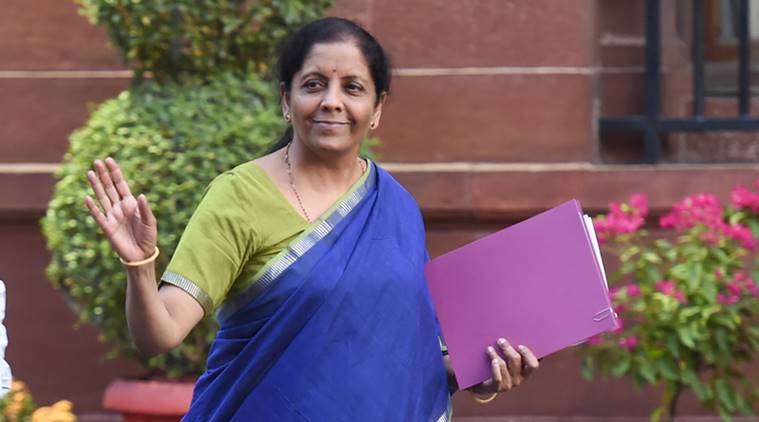
A large majority of farmers will not be able to recall in living memory, ever being happy with the outcome of their profession. Having been forced to adapt to predictable unpredictability, farmers can find resonance in words spoken a century ago by humourist Jerome K Jerome: “The weather is like the Government, always in the wrong.”
The downturn is not unreal and is underlined by data of a more-than-expected slump in agriculture exports and farmgate prices and a lagging food-processing sector. Weakening consumer and industry sentiment, bank haircuts, billions of square feet of idle real estate point to the difficulty in reversing the trend. These uncomfortable truths must be dawning on the finance minister who has been dealt a near impossible hand.
The perpetual disregard for allocating funds for human resources both at the national and state level has extracted a heavy toll on the nation. Development of human resources must become the foremost priority of Budget 2019 and the defining goal of the next decade. To take farmers out of the quagmire of their gloomy livelihoods, a slew of seemingly unconnected measures are required to be initiated simultaneously. Take the sector of food processing and human resource development.
The country is full of sick and struggling food-processing units, which are unable to utilise their capacities and service their loans. Despite multiple subsidy packages, the potential of food processing remains unfulfilled. The focus should have been to generate demand, but India is investing in creating supply by incentivising more food processing units through a food park scheme with a subsidy of Rs 50 crore per park. The fate of food parks was pre-determined but the department continues to flog a dead horse. Of the 42 food parks approved, most of the 17 which were actually commissioned are struggling or shut. The rest are yet to start and many may have walked off with substantial subsidy component.
The few success stories in food processing like dairy, potatoes, tomatoes, gherkins are predominantly of the farmers who are directly linked to processors offering a higher price, which creates a virtuous cycle of prosperity. This is because processors desiring specifics in quality, traceability and volumes invest in developing the cultivation and post-harvest handling capabilities of farmers. But our industry lacks linkages with research institutions for processable crop varieties and their availability in sufficient quantities. For example, there are hundreds of varieties of mangoes, but a handful are appropriate for processing. Due to the food insecurity concerns since Independence, agriculture research continues to focus on staple food crops instead of crops with a higher nutrition value.
Agriculture research has been the most neglected segment of the establishment not only in the last five years but even in the decade before it. Apathy has resulted in 52 per cent vacancies in sanctioned posts in national agriculture research institutions. Similarly the states, by not filling the 45 per cent vacancies in agriculture extension, are abdicating their obligation to hand-hold farmers. There is a vast shortage of veterinary doctors for animal healthcare and farm extension for animal husbandry is almost missing. This leads to the unnecessary use of chemicals, steroids and antibiotics in our food value chain. The success of the National Skill Development Council & Agriculture Skill Council of India remains limited to powerpoint presentations. The budget should attempt to fill these gaping holes.
There is unanimity on the GST council reducing GST on processed foods from 18 per cent to 5 per cent. This is a bizarre situation: One section of the government is taxing a sector while another is subsidising it. It is akin to prioritising funds to improve the efficiency of paddy sowing, while the state government targets crop diversification away from paddy. But like much else, this is also beyond the ambit of the budget. One is left wondering how much the Union budget can influence agriculture, a state subject.
With such conflicting forces at play, the goal of diversification from non-perishable crops and a secure MSP to a market-linked system of growing fruits and vegetables, dairy, poultry, etc is fraught with risks for farmers. Frustrated with having consistently failed to resolve issues of middlemen and market reforms, some policy influencers are naively floating the idea to place agriculture on the Concurrent List.
Until the share of the women farmers increases, where they do more paid work and less unpaid work, we cannot replicate the success of the Asian economies. This, economist Diane Coyle observed, was also the reason for the extraordinary economic growth in the middle of the past century. This is truer for rural India where less than 5 per cent landholdings are women-owned. Policymakers are unable to connect the dots.
Strategic development approaches will differ, depending on the objectives. A capitalist society like the US fights inequality — “the defining challenge of our time” — by creating equal opportunities and Scandinavian nations design policies to create equal outcomes. While the world is contemplating how best to fight inequality, Indian academicians are busy bickering about GDP methodology. Maybe, just maybe, we would be better off if sociologists had as much influence as economists when policies were framed.
The writer is chairman, Bharat Krishak Samaj